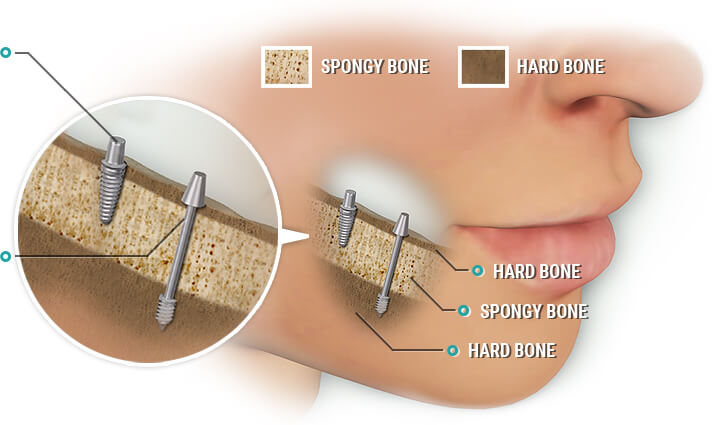
Sinus Lift - Bone Graft Treatment Dwarka
Sinus lift, sinus graft, sinus augmentation or sinus procedure) is a surgical procedure which aims to increase the amount of bone in the posterior maxilla (upper jaw bone), in the area of the premolar and molar teeth, by lifting the lower Schneiderian membrane (sinus membrane) and placing a bone graft. This procedure is performed when the floor of the sinus is too close to an area where dental implants are to be placed. Sinus Lift – Bone Graft Treatment procedure is performed to ensure a secure place for the implants while protecting the sinus. Lowering of the sinus can be caused by: Long-term tooth loss without the required treatment, periodontal disease, trauma.

Patients who have the following may be good candidates for sinus augmentation.

There are different ways to perform sinus augmentation I.e lateral window technique and osteotome technique. The lateral window technique is performed from inside the patient’s mouth where the surgeon makes an incision into the gum, or gingiva. Once the incision is made, the surgeon then pulls back the gum tissue, exposing the lateral boney wall of the sinus. The surgeon then cuts a “window” to the sinus, which is exposing the Schneiderian membrane. The membrane is separated from the bone, and bone graft material is placed into the newly created space. The gums are then sutured close and the graft is left to heal for 4–12 months. The graft material used can be either an autograft, an allograft, a xenograft, an alloplast (a growth-factor infused collagen matrix) or synthetic variants. As an alternative, sinus augmentation can be performed by a less invasive osteotome technique which is normally performed when the sinus floor that needs to be lifted is less than 4 mm. This technique is performed by flapping back gum tissue and making a socket in the bone within 1–2 mm short of the sinus membrane. The floor of the sinus is then lifted by tapping the sinus floor with the use of osteotomes. The amount of augmentation achieved with the osteotome technique is usually less than what can be achieved with the lateral window technique. A dental implant is normally placed in the socket formed at the time of the sinus lift procedure and left to integrate with bone. Bone integration normally lasts 4 to 8 months. The goal of this procedure is to stimulate bone growth and form a thicker sinus floor, in order to support dental implants for teeth replacement.
FAQ's
Unlike a bridge, which requires RCT and grinding down of neighboring teeth, an Implant is inserted into the bone and takes direct support from it like a natural tooth.
Anchoring the implant into the bone produces mechanical changes which help in more bone formation.
Titanium is the material of choice for implants. It is biocompatible and very well tolerated as well as safe for the body.
Smoking delays the healing of tissues after implant placement and is hence discouraged after the procedure.
Surgical procedures usually do not have a success rate of 100% but the failure rate is very low. Depending on the surgeon’s expertise and good patient selection, failure usually does not occur.
The procedure is done under local anesthesia and is hence not painful. After the procedure, the patient takes painkillers for a few days which keep him comfortable post operatively too.





















